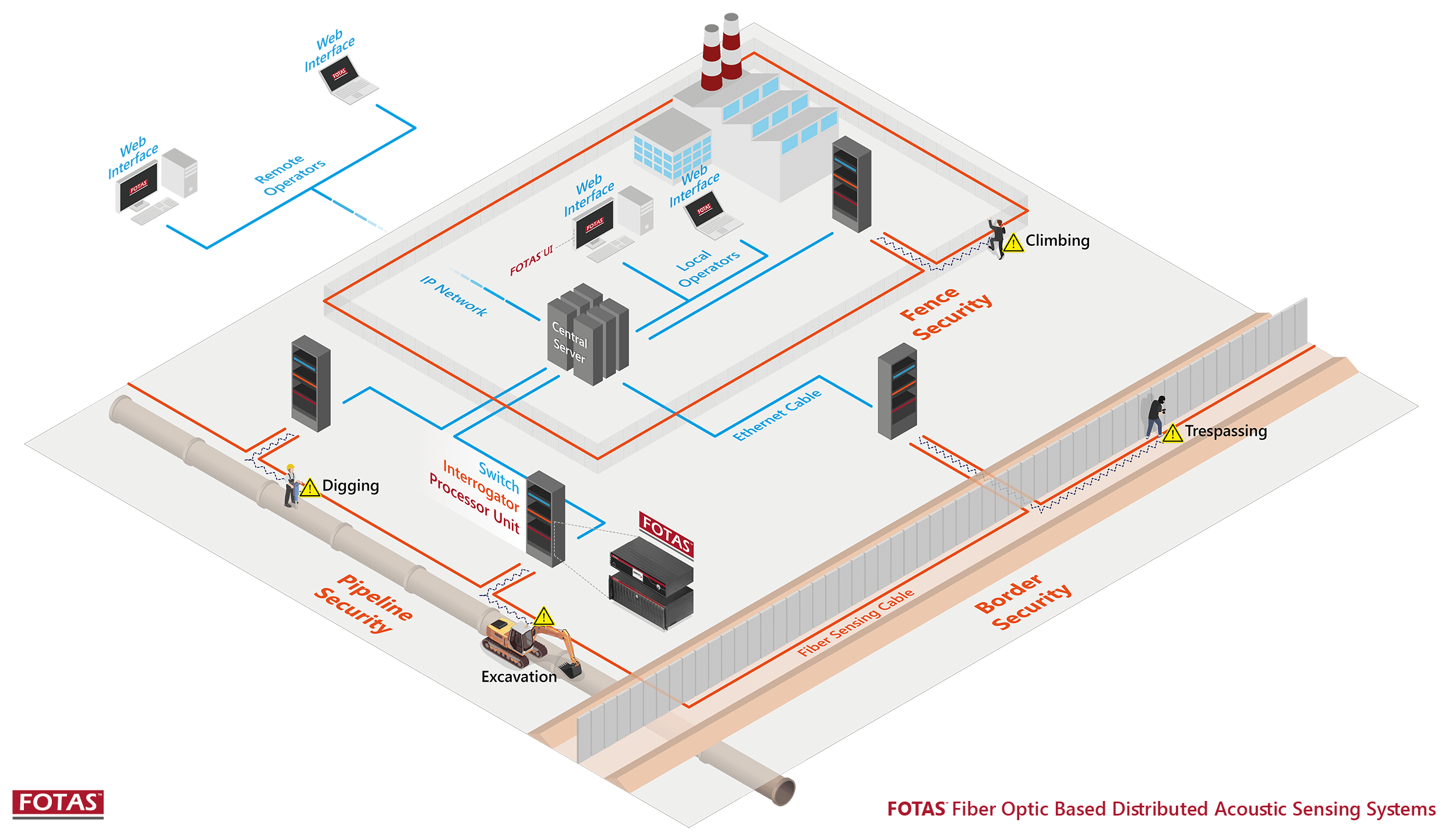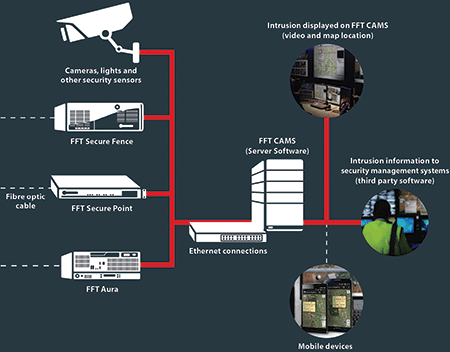The Ultimate Guide to Fiber Optic Safety And Security Systems for Your Organization
In an age where safety and security issues are vital for businesses, comprehending the ins and outs of fiber optic innovation can be transformative. This guide describes just how incorporating fiber optic protection systems not just enhances data security but also provides benefits like resistance to disturbance and real-time tracking capabilities. As organizations evaluate their safety and security needs, it becomes critical to consider the installation procedure and the most recent technologies in the field. What details aspects should be prioritized when selecting the best system, and how can organizations guarantee they make one of the most educated choices?
Comprehending Fiber Optic Technology

The core of a fiber optic wire consists of a slim glass or plastic facility, bordered by a cladding layer that mirrors light back into the core. Single-mode fibers are created for long-distance transmission, while multi-mode fibers are ideal for shorter ranges, typically made use of within buildings.
Fiber optics are not just much faster but likewise extra safe than typical circuitry. Their inherent resistance to electromagnetic disturbance and the trouble of taking advantage of the signal without discovery make them a preferred choice for businesses prioritizing data integrity and protection. As organizations increasingly rely upon protected and effective interaction systems, recognizing fiber optic modern technology ends up being important for informed decision-making.
Key Benefits of Fiber Optic Safety And Security
When taking into consideration protection choices for a business, the advantages of fiber optic systems are especially compelling. Firstly, fiber optic innovation offers outstanding information transmission speeds and data transfer capability, making it excellent for managing high-resolution video clip feeds from security video cameras. This capacity makes sure that security personnel receive real-time information, boosting general response times to prospective safety threats.
Additionally, fiber optic cables are inherently resistant to electro-magnetic disturbance, which can jeopardize the honesty of conventional copper-based systems. This resistance ensures that the data sent continues to be secure and continuous, giving a much more trustworthy safety infrastructure. Additionally, optical fiber are much less susceptible to physical damage, as they are made from glass instead than metal, reducing upkeep prices and downtime.
Fiber optic systems supply improved cybersecurity attributes, consisting of security abilities that protect sensitive data from unauthorized accessibility. Collectively, these advantages make fiber optic safety systems a durable option for businesses looking for to enhance their security steps.
Installation Process and Factors To Consider
Considering the intricacies involved, the setup process of fiber optic security systems needs mindful preparation and implementation. The initial action entails a thorough website analysis to identify optimum Home Page locations for cabling and tools. This evaluation should consider ecological aspects, existing framework, and prospective susceptabilities.

Furthermore, the installment has to adhere other to local building regulations and sector criteria. This might consist of collaborating with various stakeholders such as structure supervisors, IT groups, and safety and security personnel to make certain smooth assimilation with existing systems.
Post-installation, strenuous screening is necessary to validate system efficiency and determine any type of problems that may emerge. By prioritizing these considerations during the installment procedure, services can ensure a durable and effective fiber optic protection system that fulfills their certain security needs.
Newest Developments in Fiber Optic Security
Current improvements in fiber optic innovation have dramatically enhanced the capabilities of safety and security systems for organizations. Among one of the most significant developments is the integration of fiber optic sensing units that can identify vibrations and invasions along the border of a facility. These sensors supply real-time tracking, making it possible for fast response to potential breaches.
Additionally, the advancement of distributed fiber optic noticing modern technology permits the constant tracking of huge locations with a solitary fiber wire. This approach not just minimizes installment costs yet also boosts the reliability of checking systems by eliminating the demand for numerous, separate sensors.
Furthermore, improvements in multiplexing methods have enabled services to transmit substantial quantities of information over fiber optic networks, enhancing the abilities of video security systems. High-def video clip feeds can now be sent over cross countries without loss his explanation of quality, making sure that safety personnel have accessibility to clear and workable information.
Finally, making use of expert system (AI) in combination with fiber optic systems is changing hazard discovery. AI algorithms can assess information from fiber optic networks to identify uncommon patterns or actions, permitting positive safety measures. These innovations jointly represent a considerable jump onward in fiber optic safety and security innovation.
Choosing the Right System for Your Organization
Picking the proper fiber optic security system for your company is critical for making certain optimum protection and satisfaction. To make an informed choice, examine your particular safety demands, considering elements such as the size of your properties, the nature of your operations, and prospective vulnerabilities.
Begin by evaluating the level of security required; for circumstances, high-risk settings may demand innovative systems with incorporated surveillance and invasion detection abilities. Next, consider scalability; as your company grows, your protection system should be capable of increasing to fit enhanced demands without substantial overhauls.
In addition, explore the integrity and efficiency of numerous systems. Look for carriers with recognized track records and customer endorsements that testify to their service top quality. It's likewise recommended to inquire concerning the technology's compatibility with existing framework, guaranteeing a smooth assimilation procedure.
Final Thought
Finally, fiber optic safety and security systems provide a durable remedy for improving organization safety and security facilities. The combination of high-speed information transmission, resistance to electromagnetic interference, and progressed monitoring capabilities significantly improves overall protection (fiber optic security system). By understanding the modern technology, recognizing its benefits, and thinking about the installment process, organizations can make educated decisions. The most up to date technologies even more strengthen the performance of these systems, making certain that services continue to be protected and versatile in an ever-evolving threat landscape.